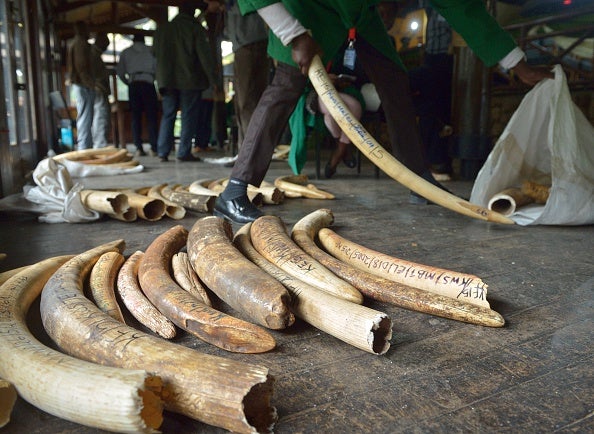Kenya to torch largest ever stockpile of ivory – worth $270 million
An estimated 3,000 elephants are still killed for their ivory each year in Kenya, despite ivory trade being banned in 1989

Your support helps us to tell the story
From reproductive rights to climate change to Big Tech, The Independent is on the ground when the story is developing. Whether it's investigating the financials of Elon Musk's pro-Trump PAC or producing our latest documentary, 'The A Word', which shines a light on the American women fighting for reproductive rights, we know how important it is to parse out the facts from the messaging.
At such a critical moment in US history, we need reporters on the ground. Your donation allows us to keep sending journalists to speak to both sides of the story.
The Independent is trusted by Americans across the entire political spectrum. And unlike many other quality news outlets, we choose not to lock Americans out of our reporting and analysis with paywalls. We believe quality journalism should be available to everyone, paid for by those who can afford it.
Your support makes all the difference.Kenya’s wildlife authority said it will destroy its vast ivory stockpile, worth £270 million and equating to the equivalent of 4,000 dead elephants.
The event will take place at an anti-poaching summit in at the end of April and will be attended by Hollywood celebrities, including Leonardo DiCaprio, Elton John and Nicole Kidman.
The fire is expeced to be eight the times the size of any other ivory stockpile that has been destroyed so far.
Among celebrities, several heads of state are expected to attending the symbolic burning of the 120 tonnes, reported IBTimes.
In March, more than 15 tonnes of ivory that had been confiscated from smugglers and poachers, which President Uhuru Kenyatta burnt to mark World Wildlife day at the Nairobi National Park.
The fire reportedly made a three metre (10 ft) fire, which burned for days.
He said: “We want future generations of Kenyans, Africans and indeed the entire world to experience the majesty and beauty of these magnificent animals.”
Chairman of Kenya Wildlife Servce, Richard Leaky, said the average weight of a pair of tusks was around 36 kilos, meaning the pile would equate to 4,000 elephants.
It is thought up to 30,000 elephants are still killed each year and ivory is still smuggled into other countries in Asia where it is used as precious ornaments and decoration, despite a ban on trading ivory in 1989 and a huge increases in anti-poaching programmes and awareness in Africa.
According to EcoWatch, there are estimated to be only 30,000 elephants in Kenya, compared to around 167,000 in the 1970s.
Join our commenting forum
Join thought-provoking conversations, follow other Independent readers and see their replies
Comments